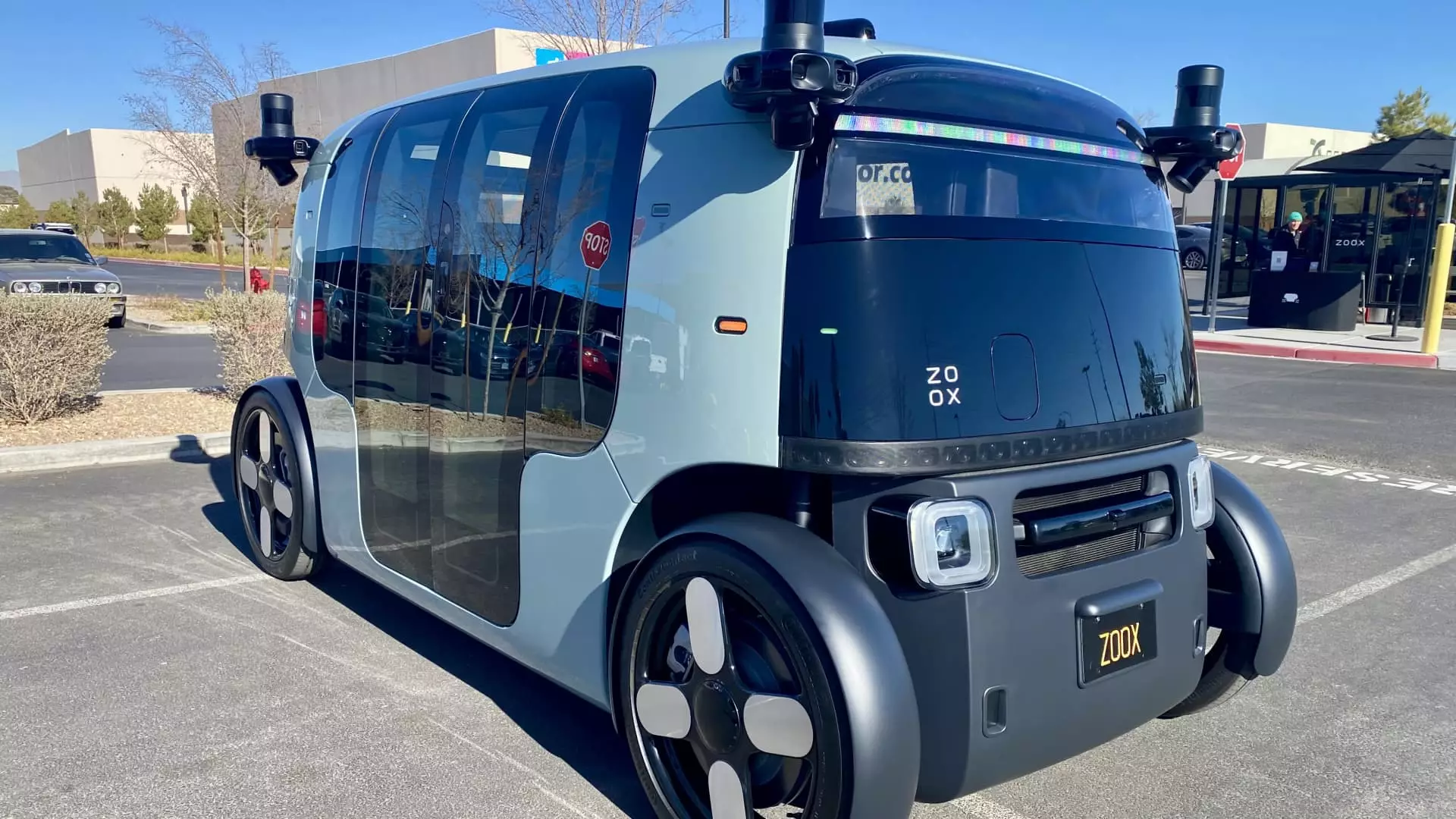The landscape of autonomous vehicles is evolving rapidly, with numerous companies vying for a foothold in the burgeoning market. Among these companies is Zoox, Amazon’s autonomous vehicle unit. This year marks a pivotal point for Zoox as it gears up for the commercialization of its robotaxi program amidst a fluctuating market. Despite a general decline in investor enthusiasm for autonomous technology, Zoox aims to carve out a niche for itself with innovative offerings.
Zoox, founded a decade ago and acquired by Amazon for $1.3 billion in 2020, is on the precipice of significant growth. As co-founder and Chief Technology Officer Jesse Levinson indicated, the company plans to expand its operations vastly within the coming months. Currently testing its unique robotaxis, which lack traditional driver controls such as steering wheels, Zoox is actively trialing these vehicles in Las Vegas, San Francisco, and Foster City, California. Las Vegas is projected to be the first market to launch its “Early Rider Program,” allowing a select group of passengers to experience the service before it is made available to a wider audience later this year.
The ambitious timeline set by Zoox comes with challenges, particularly in a market that has seen traditional automakers like General Motors and Ford back away from similar projects. Levinson’s optimism speaks volumes about the company’s confidence in its technology and business strategy. However, as investment interest wanes in areas of autonomous vehicle technology, Zoox’s trajectory remains uncertain.
What sets Zoox apart from other autonomous vehicle initiatives is its design philosophy. Unlike competitors like Waymo, which have retrofitted existing vehicles, Zoox has developed a vehicle exclusively for autonomous operation. This design approach has birthed what some critics have derisively termed “boxes” or “toasters.” Nevertheless, the unique configuration — with seats facing one another and no provision for manual control — emphasizes Zoox’s focus on passenger experience.
Experts like Sam Abuelsamid, a prominent figure in the autonomous vehicle research community, have praised the vehicle’s size and form factor. This innovative design could cater well to urban environments that are increasingly leaning toward shared transportation services. However, it simultaneously raises questions regarding adaptability and user acceptance. Stability and assertive maneuvering, demonstrated during recent tests in Las Vegas, showcase the technological competencies of Zoox’s robotaxis. Yet, instances of overly cautious behavior demonstrate the fine balance autonomous systems must maintain in a human-driven world.
Zoox enters a fiercely competitive sector, dominated by established players like Waymo. Although the technology of autonomous driving is maturing, Zoox must grapple with difficult market dynamics. Many participants in this space have struggled with cost overruns, regulatory hurdles, and public perception issues. The legacy of companies like GM’s Cruise, which faced setbacks, reflects the broader challenges in bringing autonomous vehicles to market.
Abuelsamid highlighted the robust technological directions Zoox is pursuing but expressed skepticism about the company’s business model. Transitioning from a convincing prototype to a commercially viable entity involves navigating financial sustainability amidst ongoing operational expenditures. The initial promise of driverless technology in the late 2010s was met with the grim reality of mounting costs and slower-than-expected adoption rates.
As Zoox seeks to introduce its robotaxi services to urban centers, it does so amid warnings from analysts about the difficulties inherent in realizing a sustainable business model. Unlike Waymo, which has laid the groundwork for a broader operational framework through ongoing partnerships — such as a prominent alliance with Uber — Zoox must establish strategic collaborations to foster a potentially lucrative business environment.
Additionally, regulatory landscapes remain murky across many U.S. cities, presenting another layer of complexity for Zoox’s aspirations. Without a clear regulatory pathway or consumer trust, winning over the public may prove to be one of the most crucial aspects of their rollout strategy.
Zoox aims to build on the excitement regarding autonomous transport, but the unique challenges presented by public perception, operational costs, and competitive frailty may impede swift progress. The company’s ability to reconcile these issues will determine whether it can emerge as a key player in the evolving autonomous vehicle sector.
Zoox finds itself at a crossroads. While its technological innovations and plans for expansion are commendable, the harsh reality of the market landscape looms large. Stakeholders will watch carefully to see if Zoox can navigate these waters and establish itself firmly in the competitive arena of autonomous vehicles. With a conservative and steady roadmap in mind, the coming months will indicate whether Zoox can overcome existing hurdles and successfully democratize robotaxi transport for a wider audience. This year may very well be the beginning of a new chapter in autonomous ridesharing; only time will tell if Zoox will shine or struggle in the limelight.


Leave a Reply